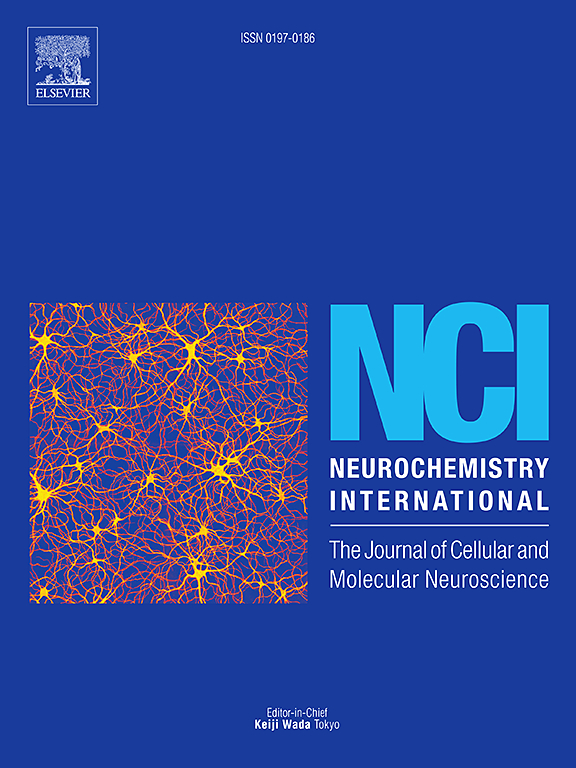慢性限制性应激大鼠前额皮质M6A RNA甲基化的表观转录组改变影响转录动力学。
IF 4
3区 医学
Q2 BIOCHEMISTRY & MOLECULAR BIOLOGY
引用次数: 0
摘要
慢性抑制应激(CRS)是一种广泛应用于研究应激诱导的分子和神经元变化的模型。在这项研究中,我们检测了CRS大鼠前额叶皮层转录组范围内的m6A甲基化,以了解应激的分子影响。血浆皮质酮水平升高证实了CRS大鼠的生理应激反应。MeRIP-seq分析确定了21,669个差异甲基化转录本,与较小的低甲基化转录本子集相比,主要是高甲基化模式(4301个转录本)。染色体分布显示,高甲基化在多条染色体上广泛存在,在染色体1、3和10上有显著的高峰。基因表达谱显示,CRS大鼠有1424个基因差异调控,其中847个基因上调,577个基因下调。整合m6A甲基化和基因表达数据显示出负相关,其中高甲基化转录本下调,表明m6A在转录本稳定性和周转中起作用。高甲基化转录本的功能分析强调了关键神经元过程中的富集,包括突触可塑性、神经递质信号传导和染色质重塑。此外,编码转录本的3'UTR表现出丰富的m6A甲基化标记,表明其在mRNA稳定性和翻译效率中具有调节作用。表达分析显示m6A关键甲基化相关酶(METTL3、METTL14和ALKBH5)显著下调,进一步支持CRS下m6A失调。通路分析强调了RNA代谢、染色质重塑和与压力相关精神疾病相关的神经生物学通路中差异甲基化转录物的参与。总之,该研究提供了应激反应的表转录组学机制及其在神经精神疾病(如重度抑郁症)中的意义。本文章由计算机程序翻译,如有差异,请以英文原文为准。
Epitranscriptomic shifts in M6A RNA methylation influencing transcriptional dynamics in the prefrontal cortex of chronic restraint stress rats
Chronic restraint stress (CRS) is a widely used model for investigating stress-induced molecular and neuronal changes. In this study, we examined transcriptome-wide m6A methylation in the prefrontal cortex of CRS rats to understand the molecular impact of stress. Elevated plasma corticosterone levels confirmed the physiological stress response in CRS rats. MeRIP-seq analysis identified 21,669 differentially methylated transcripts, with a predominant hypermethylation pattern (4,301 transcripts) compared to a smaller subset of hypomethylated transcripts (79). Chromosomal distribution revealed widespread hypermethylation across multiple chromosomes, with notable peaks on chromosomes 1, 3, and 10. Gene expression profiling indicated differential regulation of 1,424 genes, with 847 upregulated and 577 downregulated in CRS rats. Integration of m6A methylation and gene expression data revealed an inverse correlation, where hypermethylated transcripts were downregulated, suggesting a role for m6A in transcript stability and turnover. Functional analysis of hypermethylated transcripts highlighted enrichment in key neuronal processes, including synaptic plasticity, neurotransmitter signaling, and chromatin remodeling. Additionally, the 3′UTR of coding transcripts exhibited enriched m6A methylation marks, suggesting a regulatory role in mRNA stability and translation efficiency. RNA level expression analysis revealed significant downregulation of key m6A methylation-related enzymes (METTL3, METTL14, and ALKBH5), further supporting m6A dysregulation under CRS. Pathway analysis underscored the involvement of differentially methylated transcripts in RNA metabolism, chromatin remodeling, and neurobiological pathways linked to stress-related psychiatric disorders. Altogether, the study provides insight into the epitranscriptomic mechanisms underlying stress responses and their implications in neuropsychiatric disorders such as major depression.
求助全文
通过发布文献求助,成功后即可免费获取论文全文。
去求助
来源期刊

Neurochemistry international
医学-神经科学
CiteScore
8.40
自引率
2.40%
发文量
128
审稿时长
37 days
期刊介绍:
Neurochemistry International is devoted to the rapid publication of outstanding original articles and timely reviews in neurochemistry. Manuscripts on a broad range of topics will be considered, including molecular and cellular neurochemistry, neuropharmacology and genetic aspects of CNS function, neuroimmunology, metabolism as well as the neurochemistry of neurological and psychiatric disorders of the CNS.
 求助内容:
求助内容: 应助结果提醒方式:
应助结果提醒方式:


